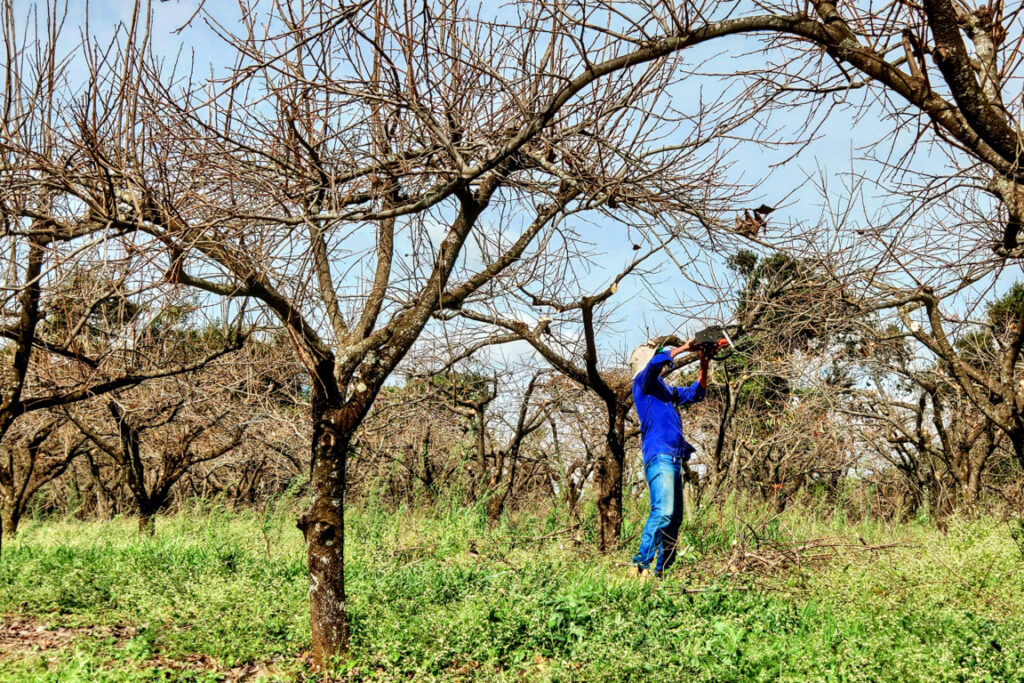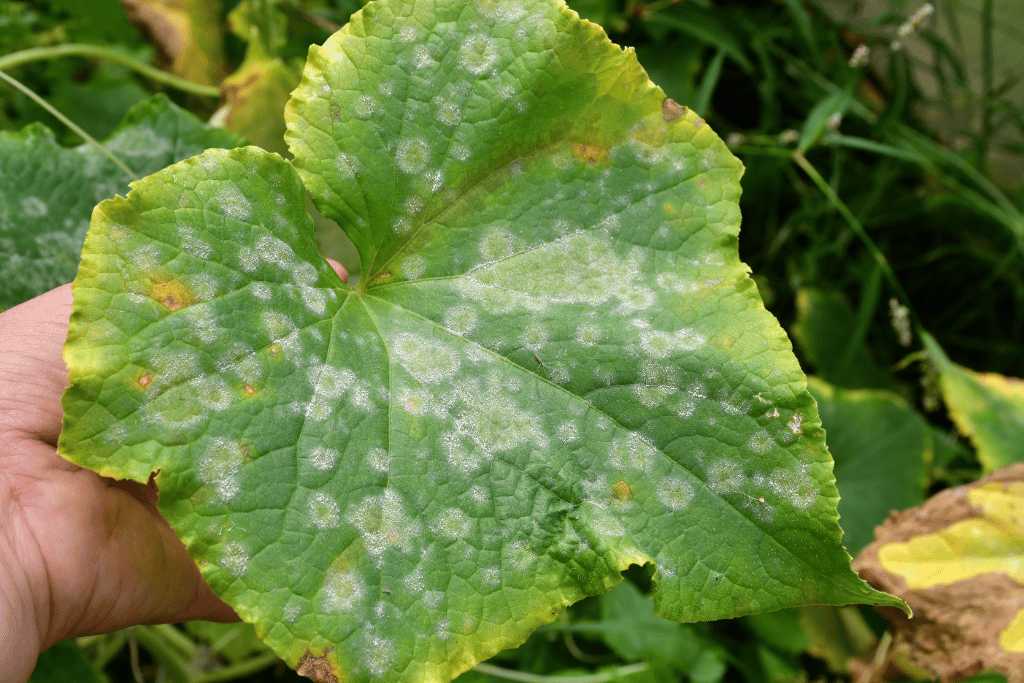
The curious looking persimmon, somewhat resembling a tomato, is largely native to the Asian continent where it is popularly cultivated. The American persimmon (Diospyros virginiana) is native to the east coast and into the midwest.
The lack of fluid movement and energy transport will prevent too many suckers from sprouting up. A tree produces suckers, young sprouts that rapidly grow straight up and “suck” the energy from the tree, as a way to feed and heal the wound at the site of a cut. Suckers can be a nuisance as they command a lot of energy and work against the stability, shape and structure of the tree.
The sweet, bright orange fruit may not be so recognizable to westerners, as it is much more prevalent in Asia. I must admit, I wasn’t at all familiar with persimmons most of my life. One season I started working at a local farm and much to my surprise, in their small fruit orchard, were these tall, overgrown trees that I couldn’t identify. Apparently they were persimmon trees and boy did they need to be pruned!
In my region of the northeast United States there are an abundance of apple, peach, pear, plum and nectarines; all familiar types of fruit and trees I’ve had a lot of experience pruning. Persimmons on the other hand, not so much.
So I was excited and a bit mystified to encounter trees bearing this unique fruit. I set out to learn more about this interesting tree fruit and how to properly prune it to encourage health, provide a strong structure and make the picking process easier. This is what I learned.
Assessing the Tree and Planning to Prune
Factors to consider are: The time of year, age and size of the tree will dictate the type of maintenance and pruning that is required.
You will need a few tools to get the job done the right way. I recommend:
- Pair of hand pruners
- Set of loppers
- Hand saw
- Ladder
- Rubbing alcohol and rag
Use hand pruners for small branches and suckers. The loppers and saw should be used to cut any branch over 1” in diameter. A ladder will be necessary as the tree grows in height. It’s extremely important to always sanitize your tools with rubbing alcohol before and after use to prevent the spread of disease.
When to Prune a Persimmon Tree
The best time of year to prune most fruit trees is in mid-winter to early spring. At this point trees are dormant. They have not yet woken up from their winter slumbers, therefore they don’t have much stored energy flowing through the roots, trunk and limbs.
The lack of fluid movement and energy transport will prevent too many suckers from sprouting up. A tree produces suckers, young sprouts that rapidly grow straight up and “suck” the energy from the tree, as a way to feed and heal the wound at the site of a cut. Suckers can be a nuisance as they command a lot of energy and work against the stability, shape and structure of the tree.
Another good reason to prune in the winter is that it’s a time of minimal pest and disease pressure. The chances of spreading disease or carrying a pest from one tree to another is highly unlikely, due to the cold weather. Conditions may not be ideal for outside activity, but if you dress warmly it is possible to enjoy the quiet peacefulness of nature during the winter!
Finally, in the wintertime, the tree doesn’t have any foliage or fruit on it. I can look at a tree and clearly see all of the limbs. It makes it easier to determine which branches need to be shortened or removed. It’s also valuable to study where last year’s cuts were made and where new growth is starting to emerge from.
The winter is all-around the best time of year to prune persimmon trees. Easy access and visibility of all limbs and disease, pest and sucker prevention are the top reasons to prune in the winter.

It is possible, however, to prune in the summer. It’s not generally encouraged because summer pruning may stunt fruit production or spread disease, but can be helpful if done carefully.
I like to do a very light summer prune to encourage a healthy and abundant harvest in the fall. Inevitably a few suckers have developed in the spring and summer; the majority of this new growth can be removed. Any limbs that seem too long and overburdened by the weight of the fruit can be shortened. Large clusters of fruit can be thinned to maximize their size and to prevent branches from breaking.
And that’s it. Avoid large cuts and don’t make an excessive amount of cuts on one tree during the summer. Always use sanitized tools to prevent the spread of disease.
Pruning at the Time of Planting
Most bare-root or potted trees won’t require much pruning due to their young age and small size. The best thing to do after planting a new tree is to cut back all the branches to half their length. This will direct the energy downward to establish a strong root system that will serve as a solid anchor for the tree.
Pruning Young Persimmon Trees
Trees that are 1-5 years old require careful attention and consideration when pruning. The structure that is sculpted now will determine how they develop into maturity.
I believe the selection and development of the scaffolding branches is the most important step to constructing a stable shape. The lowest main branch should be high enough that the grass below can easily be cut. Overgrowth of weeds, grass and vines could otherwise become an issue. It’s not healthy for limbs to droop close to the ground. Disease, pests and animals are liable to damage the fruit and spread throughout the tree. Keep the lowest limb at least a few feet above the ground.
The strongest, outward growing limbs should be selected as the main scaffolding branches. Make sure they are well spaced out, they should be at varying heights on the main stalk and never cross each other. Smaller and weaker limbs should be removed the first 5 years, while promoting the chosen scaffolding branches.
Pruning Mature Persimmon Trees
5 years from their initial planting, persimmon trees are considered mature. At this point they require less major pruning but will benefit from smaller maintenance cuts. It is still good practice to prune every year.
A thorough inspection in the winter will reveal broken or diseased limbs that should be removed. Any branch that crosses another, grows straight up, down or back into the tree must be cut out. Weak limbs or new growth from the trunk that crowds the interior and other branches should also be removed.
Persimmons tend to produce a lot of suckers from their roots. It’s important to cut all suckers that emerge from the base of the tree, otherwise they will form a thick mass that steals energy from the tree. A layer of organic mulch can be spread around the base of the tree to discourage suckers. Roots are sensitive, so don’t cultivate or walk on the soil around the tree trunk.

Persimmon wood tends to be weak, compared to other fruit tree wood. For this reason, main scaffolding branches that grow too long should be headed off and cut back to a bud cluster, closer to the main branch. This will strengthen the branch, helping it produce larger and healthier fruit.
On the other hand, persimmons fruit from new growth that sprouts from last year’s buds. With this in mind, it’s not a good idea to cut off the tips of every branch, only old wood that has grown too long to support loads of fruit at the end. Short branches of new growth should be left unpruned to generate fruit for the coming fall.
At this stage of pruning I think back to the simple advice I once received from an old apple farmer. “It’s all about shortening and flattening.” Nothing should be growing straight up, as this leads to crowding and poor shape. Shorten long branches to reinvigorate them, redirecting energy and promoting a sturdy structure for years to come.
The most important aspects of pruning are ensuring proper airflow, allowing sunlight to hit all parts of the tree and reinforcing a strong frame that will support lots of fruit.
How to Prune an Overgrown Persimmon Tree
Old, overgrown trees may seem daunting, but can be salvaged. Focus on the oldest, largest branches and remove ⅓ of the total growth of the tree per year. Make the cuts all over the tree so that new growth will be well distributed around the tree. It may take a couple years to revive the tree, but the removal of all of the old growth will stimulate new growth, and hopefully, lead to healthy fruit production.
The new growth that does emerge from these cuts can be trained in the manner of a young tree establishing scaffolding branches.
How to Prune a Fuyu Persimmon Tree

‘Fuyu’ is a specific cultivated variety of persimmon, characterized by its stout growing habit and productive yield of fruit.
When the tree reaches about 3’ in height, the main central leader can be cut out. Then the main scaffolding branches should be selectively removed until three to five strong contenders remain. Make sure they are spread evenly around the trunk of the tree and growing upwards at a 45 degree angle.
The fruit on Fuyus should be thinned every year. It’s typical for the tree to set more fruit than it can bear; the heavy loads often lead to broken limbs or irregular fruiting cycles. After the fruit has set, carefully push back on the fruit to knock it off the limb. Fruits should be spaced to 6” apart.
The practice of thinning fruit may seem counterintuitive, but trust me as somebody who has witnessed the difference between trees that have and have not been thinned. It always leads to a stronger, healthier tree with much more appetizing fruit.
Conclusion
Unfortunately I never did get to prune those poor persimmon trees on the farm. Apparently there were more important tasks to take care of that spring. But that potential job, along with my passion for pruning fruit trees, sparked a curiosity that drove me to write this article.
Growing your own fruit trees is an adventurous endeavor that can be extremely rewarding. It is exceptionally enticing to imagine picking bushels of sweet, bright orange persimmons every fall.
Understanding the basics of pruning these trees will go a long way to making that dream a reality. Read the article carefully and try implementing the discussed tactics and techniques. With a little effort and practice you can learn to perfectly prune your own persimmon trees.
Frequently Asked Questions (FAQ)
What time of year is best to prune persimmon?
The winter is generally the best time to prune persimmon tree. The trees are dormant and have little chance of being affected by disease, pests or sucker production.
Is it possible to rescue an overgrown persimmon tree with pruning?
Like most fruit trees, persimmons can be revitalized with heavy pruning. ⅓ of the oldest wood should be removed annually until new growth emerges. New branches can be retrained into a more favorable structure.
What shape should a persimmon tree have?
When I prune, I imagine the shape of a Christmas tree or umbrella. It may sound strange, but the idea is to have the highest limbs at a short length so they don’t shade or block out the level below. Scaffolding branches are kept gradually longer going down the trunk towards the ground. This way all fruit has access to sunlight and is easy to pick come harvest time.
Is it important to prune a persimmon tree every year?
Pruning is a task that should be performed every year. I like to prune every year to inspect the previous season’s cuts and new growth development. Even if the tree seems to be in good health, there are bound to be some suckers or dead wood that can be removed. Regular maintenance will ensure good tree health long into the future.
How many years will a persimmon tree produce fruit?
Persimmon trees start to reliably bear fruit after 5 years and will produce for 60 years on average. The lifespan of the tree can be even longer with proper maintenance and care.



